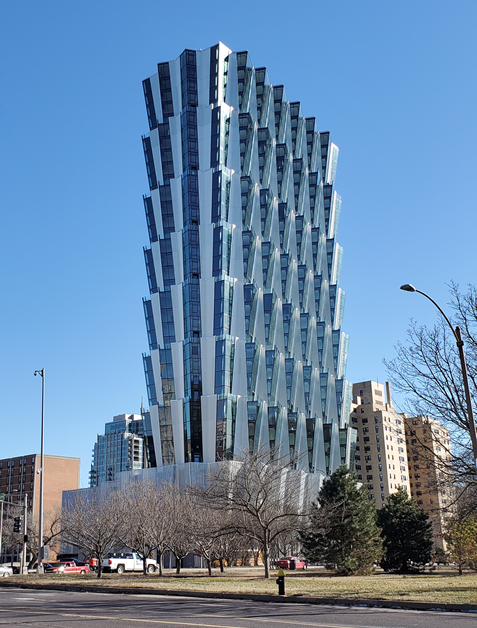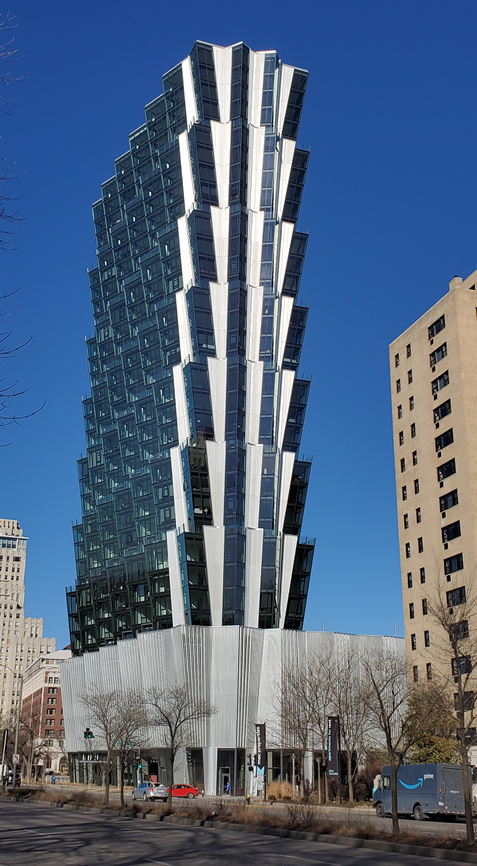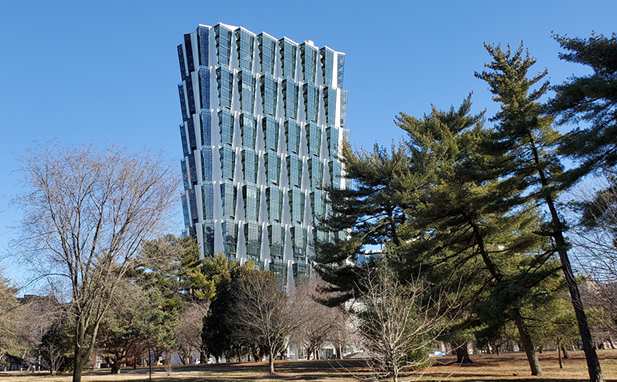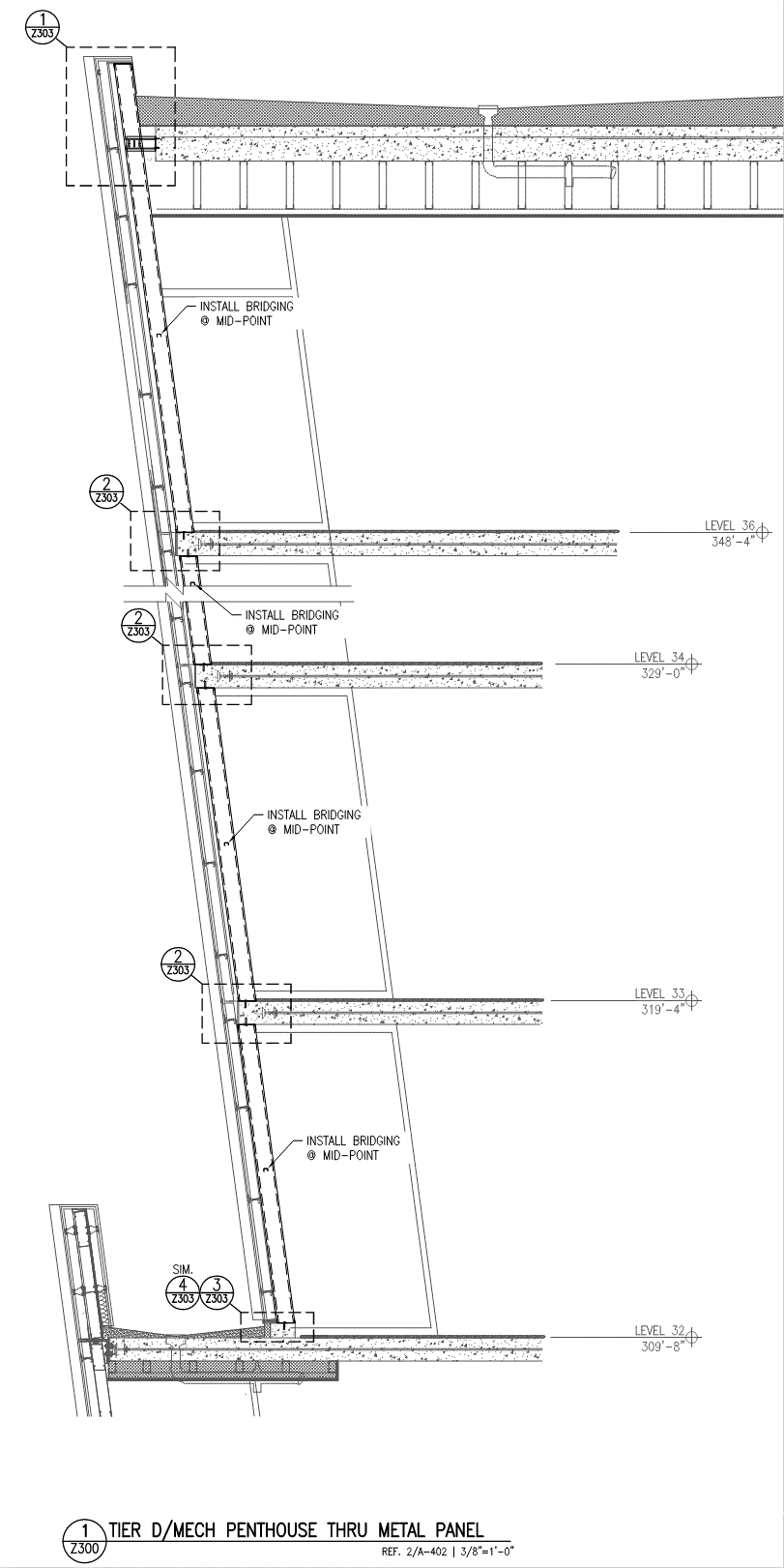2021 CFSEI DESIGN EXCELLENCE AWARD WINNERS
THIRD PLACE – RESIDENTIAL/HOSPITALITY
McCLURE – 100 KINGS HIGHWAY
ST. LOUIS, MISSOURI

100 Kings Highway
100 Kings Highway
St. Louis, Missouri
Completed: 2020
Owner: Silliman Group
Architect of Record: Studio Gang
Engineer of Record for Structural Work: Magnusson Klemencic Associates
Cold-Formed Steel Specialty Engineer: Joshua Garton, McClure
Cold-Formed Steel Specialty Contractor: Mike Huber, Wies Drywall
Award Entry Submitted by: Lauren Gutknecht, McClure
Project Background
Located in St. Louis, Missouri, 100 Kings Highway is a 37-story apartment complex that overlooks Forest Park. The 540,000-square-foot building has a structure of a post-tensioned concrete frame with exterior non-bearing cold-formed steel (CFS) framing infill between the slabs.
Design Challenges and Solutions

The exterior walls consist of tilted exterior CFS wall panels, with the cold-formed steel framing itself tilting outward at approximately nine degrees. The tilting walls required that a portion of self-weight be applied in the windward direction of the stud. At the inside corners, the walls radiused around the slab as well as tilted out. Because of the building’s height and difficulty reaching exterior connections, all attachments were designed so that they could be installed from the interior of the building.
This building is located in a high seismic zone and is expected to experience seismic drift between floors. To accommodate this, the walls were engineered to show they could tilt in and out, as well as show that the sheathing was flexible enough to accommodate the required in-plane movement. This prevented the need to have costly drift clips installed to allow for the movement. The wall framing ended up being more flexible than the exterior cladding, ultimately requiring the cladding to be designed to drift in front of the metal stud wall to prevent damage to the finish. This required the coordination of load transfer from the cladding to the metal studs.
 
|